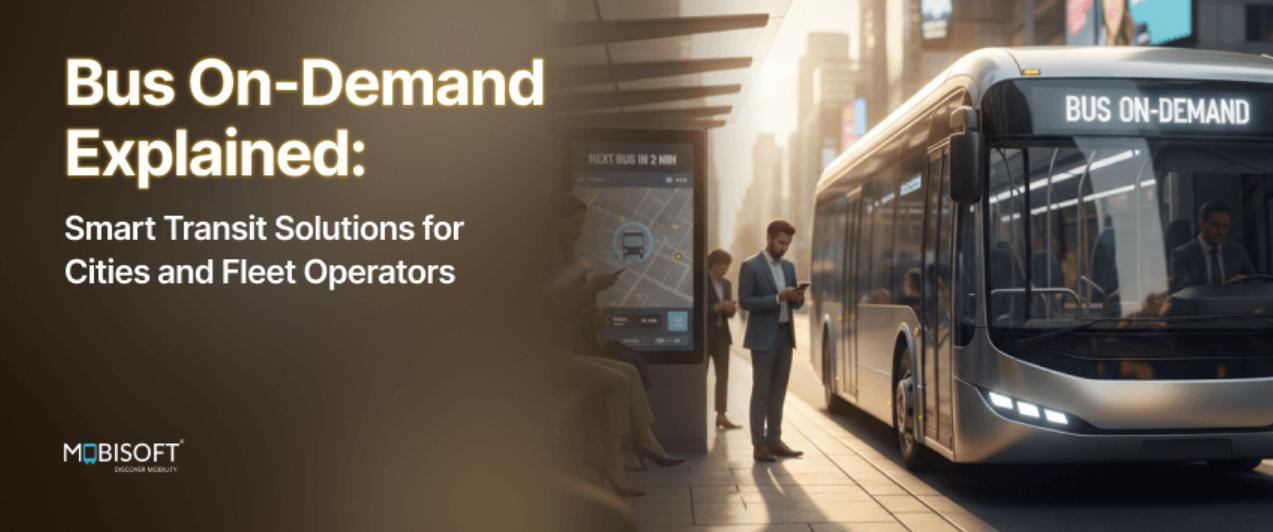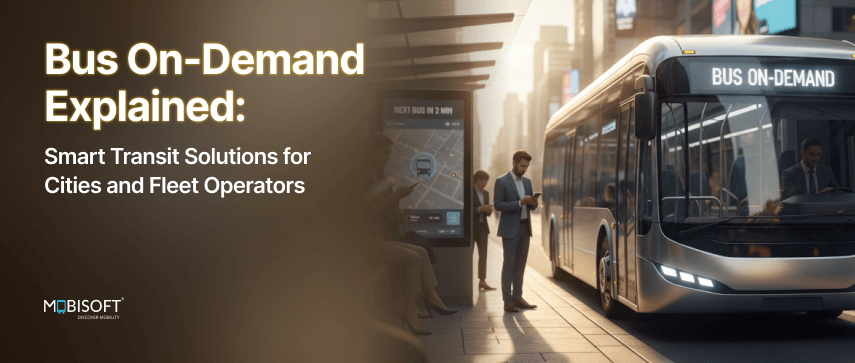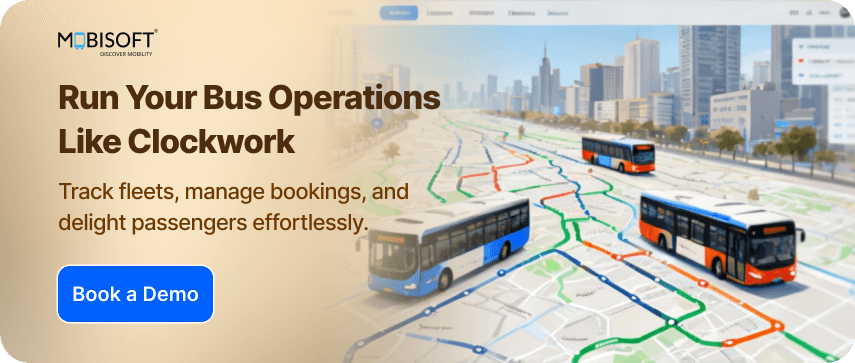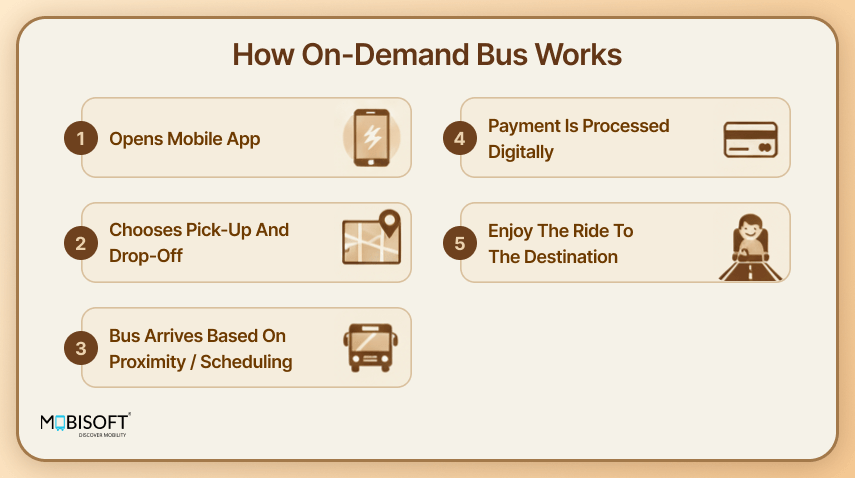On-Demand Bus App Development: Building Smarter Transit Ecosystems

Bus On-Demand Explained: Smart Transit Solutions for Cities and Fleet Operators

With a rising population, urbanization, and an increasing number of vehicles on the road, transport systems are facing several challenges. The population is growing, and city infrastructure is becoming increasingly complex. Bus transport alone cannot fulfill the personalised needs of commuters today. Dynamic solutions such as Bus on-demand services offer customised services using technology. Tech-aligned services are efficient, making travel easier.
On-Demand Buses Through Mobile Apps
On-demand buses enable transportation through on-demand bus apps, adapting routes in real-time based on demand. A 2025 survey report indicates that the global bus market, encompassing both public and on-demand buses, is expected to grow significantly from USD 51.27 billion in 2024 to USD 116.99 billion by 2035. This growth is due to rising urbanization, increased population, and the shift to sustainable transport systems.
The worldwide experience with using bus on-demand systems is a valuable step toward sustainable urban transport solutions. Cities facing burgeoning populations and acute environmental conditions find this new-age strategy a chance to improve public commute services.

The Mechanism of Bus On-Demand Services

Bus-on-demand services combine technology and operational planning to provide efficient urban transportation. The smooth working of these services involves:
App-Based Requests
-
Riders download a dedicated on-demand bus booking app to create their profile and request rides.
-
The app's interface is intuitive, with elements of ride tracking and payment handling.
Routing Algorithms
-
On-demand bus technology thrives on advanced routing algorithms.
-
The algorithms work with real-time data, including passengers and traffic, and determine the best routes.
-
The result is a smart on-demand bus solution that minimizes waiting times and maximizes occupancy.
User Journey
-
Users can request rides and wait for their pick-up at virtual stops shown in the app.
-
These virtual maps are placed strategically to offer the services to the maximum users possible, resulting in shorter travel time.
-
Users can check driver ETAs as well as the approximate time of reaching the destination.
Technology Integration
-
Users can track their driver’s location, which is enabled through GPS systems.
-
The ability to monitor location in real-time, also during the journey, makes it reliable and trusted by the users.
Operational Models
-
Bus on-demand services can vary depending on the needs of the users.
-
Many offer pooled rides for more affordable and efficient commutes, office buses, for example. Others offer a personalised commute with virtual stops.
-
This room for customisation helps companies offer tailored services, so the users can enjoy safe and comfortable rides.
Fleet Types
-
The size of the vehicle can differ significantly depending on demand and population density.
-
Most services employ minibuses or shuttles, which are best suited to on-demand services because of their effectiveness within urban settings.
Learn how our bus fleet tracking solutions help operators monitor performance, ensure route accuracy, and enhance real-time visibility for passengers.
CTA: Read More:
- AI
- Vitamins
- Health
- Admin/office jobs
- News
- Art
- Causes
- Crafts
- Dance
- Drinks
- Film
- Fitness
- Food
- Oyunlar
- Gardening
- Health
- Home
- Literature
- Music
- Networking
- Other
- Party
- Religion
- Shopping
- Sports
- Theater
- Wellness


